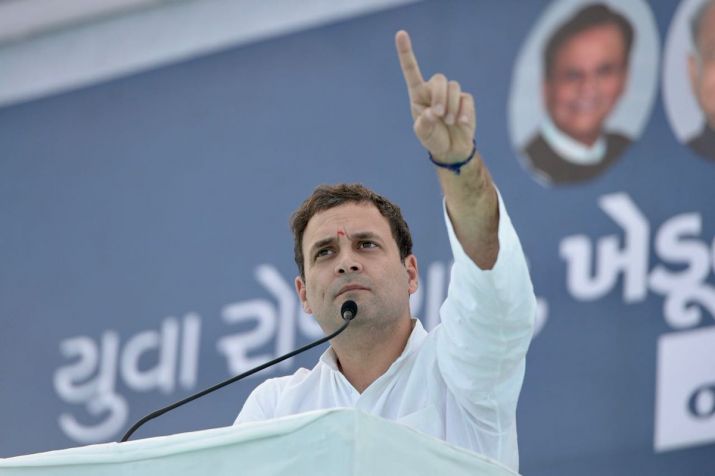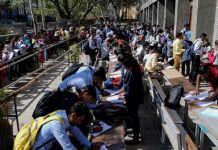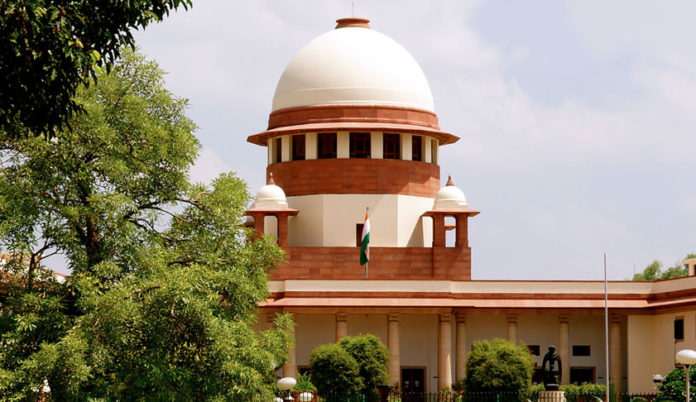
Just a few months ago there were people rushing to withdraw their money in Yes Bank, after RBI declared that this bank was in trouble and would be taken over. People rushed to withdraw their money and this is what is called ‘a run on a bank’. Everyone rushes to withdraw. However they were stopped at the bank gates with notices that you can withdraw only Rs 50,000. Not more. Never mind that this is your money and the bank has a promise to pay on demand. RBI stopped all bank transactions by cheque or electronic means. You can’t receive or pay money from your account. If people had a choice all deposits might have been withdrawn but the point is that the bank would not have the money to pay these depositors. It would collapse without being able to pay all depositors. That is why RBI stopped people.
If the bank doesn’t have cash to pay all its depositors, then how can this work. How does it promise to pay people in cash on demand and when people go rushing for their cash it can’t pay.
The Centrality of Trust Within the Banking Sector
A run on a bank is a good time to understand how it operates. Sad but true. All banks run on trust. Something intangible but as important as air around us. People have to trust that their money deposited is safe. In normal times when there’s trust and no panic the system works well. People trust that their money is safe and the government through RBI is supervising the system. The role of RBI could be compared with that of a guard to ensure safety for depositors and also a referee to see that all banks follow rules. Everyone is not rushing to withdraw their money because they think it is safe. In such as situation the law of averages work. On an average on each working day a small percentage of people require cash and if banks keep a small amount of money as cash they are able to adhere to their promise to pay in cash when demanded. Experience informs the banks as to how much cash would be required. RBI as the central bank for the country ensures that adequate cash is kept by all banks by prescribing some rules to be followed by all. RBI also organizes the printing and movement of currency-coins and notes- to all bank branches in the country. It has to ensure that there’s adequate currency in the country and that no bank faces a shortage. When this system is working you don’t panic and you withdraw from the bank or ATM as you require. Banks will have adequate cash, which is a small fraction of its deposits. People continue to trust that their money is safe since it is available as cash on demand. If the trust breaks down and everyone rushes to withdraw at the same time then it is hell. The bank can only collapse because it would never have the cash to pay ALL depositors.
Bank Deposits as Money
Banks are special creatures. They do not operate like a safe deposit locker with your money stacked inside and taken out when you need. Suppose you deposited Rs 100000 in cash at a bank. What does it do? It opens an account in your name for this money and gives you a passbook for keeping a record and an ATM card for withdrawing money as you require. Your money in cash is now simply a bank deposit number. Banks have created a new form of money as demand deposits. These are numbers in their books that they owe you one lakh. As and when you need cash you withdraw against this deposit. Your deposit number keeps changing. As explained before when there are large number of depositors, on an average only a few would demand cash each day. A small fraction kept as cash is enough to keep the promise to pay anyone who wants.
One of the many rules for banks to follow is:
According to Section 42 of the Reserve Bank of India Act, 1934, each Scheduled Commercial Bank has to maintain a minimum cash balance with the Reserve Bank, as Cash Reserve Ratio (CRR). It is prescribed by the Reserve Bank from time to time.
These bank deposits as new form of money are very convenient for all. People can receive and pay money through these accounts. It could be by cheque or electronic transfers. They don’t have to use cash. The banking system ensures that money from one bank account gets transferred to another account in a safe and sure manner. Banks keep these records and settle accounts among themselves. All this work is supervised by RBI. Bank deposits as money is the major form of money in the economy. Millions of transaction would not be possible without them.
To understand the importance of cash & demand deposits as money look at the stock of money in the country as on 27st March, 2020 as follows:
| Currency-coins and notes- with the public | 2341851 Crore Rupees |
| Demand deposits- Saving & Current
Account held by people at banks. |
1737659 Crore Rupees |
| Fixed Deposits held by people. They can easily be converted to demand deposits, when required. | 12677590 Crore Rupees |
Source: RBI
Banks are indeed special. They have created a new form of money whose records we find in our passbooks. There’s nothing physical here. They are just numbers that expected to be maintained honestly. We all trust that payments made or money received would be recorded properly. That is why banks have elaborate systems for checking signatures, passwords, account numbers so that we can believe that the system is credible and our money is safe. The RBI has to lay down rules and supervises the system that would ensure that people can use their deposit accounts as conveniently as cash.
At the same time the coins and notes are required for crores of other transactions. India is the second largest producer of currency in the world because of its population and large informal sector in rural and urban areas that use cash. For people living in interior rural regions there are few bank branches. The RBI has to organize printing of new notes; ensure that notes and coins reach all bank branches as required by them so that there are no shortages; soiled notes are replaced and that there are no counterfeit notes circulating. All this is part of their elaborate currency management systems. This management behind the scene is what holds up our unthinking trust in cash.
Banks create money
What does the bank do with the money it has as deposits from the public? It can lend to those who need them and earn interest. It is from these earnings as interest on loans that it is able to run its business and also pay the depositors a small amount. Banks as a system have another power that is unique. It can create money, almost out of nothing. Let’s stretch the earlier example for a simplified picture. You had deposited one lakh in cash and the bank created an account in your name. You can now use this to withdraw cash or make transactions through the account by receiving or paying money, through cheques or electronic transfers. Suppose another person comes to the bank with a business proposal of purchasing goods for a new garment shop that she has started. She wants a loan of 5 lakhs. The bank finds the business plan reasonable that the new shop is likely to run and earn money. It would like to give her a loan and also earn interest for the bank. What does it do? It has only one lakh as cash. It creates money. It opens a new deposit account for the borrower and shows 5 lakhs as a deposit in her account. This is money created and given to her by the bank. She can use this just as you are using your deposit account. She buys stocks for the shop and pays through this account. Sometimes she withdraws cash to pay for miscellaneous expenses. When the shop begins to run she deposits her cash collection into this account. At the end of a month the bank charges her interest on the loan of 5 lakhs and this is payed through this account. She pays back the loan amount after a certain period.
Again all this works essentially on trust. The bank trusts the borrower would put in effort to run the new shop and earn money for herself and be able to pay back the loan with interest. It does keep some security such as her house property papers, in case things go wrong, but relies on the mutual trust that the loan arrangement is beneficial for both. It is this intangible trust, if it is maintained, that propels the system to work.
Is there a limit to how much money it can give out as loans by creating new deposit accounts? Let’s examine this simplified example. The bank’s position after it has given out this loan is as follows:
| Liabilities (what it owes) | Assets (what it owns) |
| Deposits with public 600000 | Loan 500000 |
| Cash 100000 |
In reality a bank must have around 15 to 20 % of its deposits as cash in hand or as cash with RBI or as securities approved by RBI. All this is to ensure that cash would always be quickly available for the banking system to work and the trust maintained. These rules are laid down by RBI. In the above example with this base cash of one lakh this is around the maximum amount it can give as loans.
For a bank to work the system has to maintain trust on both sides. With depositors that their money is safe and payable as cash on demand & to be used to receive or pay money through their account. For borrowers it has to trust that they would pay back their loans with interest. This is the earning for the bank to run its business.
It is the responsibility of RBI to set the rules and also supervise, monitor, give directions & take action when required. For this reason it is called the central bank of the country. It is like an umbrella above all banks both to protect and guide them. When it works well public trust is maintained in the system. When a bank falters or the RBI is not effective the intangible trust starts to develop gaping holes.
Distrust is contagious
Just as a bank has amazing powers to create money as demand deposits and provide people a new way to transact without cash it is also prone to contagion. If people distrust a bank this intangible loss of trust has the capacity to spread to all other banks in the system. Rumors here are very powerful. They have the capacity to bring a bank down, even if it is not true. Look at the messages and sentiments circulating after the Yes Bank disaster.
“Baseless and factually incorrect messages are being circulated on Whats App. We assure you that Kotak Mahindra Bank is financially strong”.
“The Maharashtra government has made matters worse for private banks by announcing that all state government accounts would be moved from private banks to those in the public sector”
“Karur Vysya Bank has the distinction of being consistently profitable throughout its 104 year history. KVB is fundamentally strong institution.”
RBL a private bank said, “Rumors around financial health and stability of the institution, especially in social media, seem to be misplaced, motivated and not based on facts.”
(From a report in The Times of India, March, 2020)
Why does this contagion spread? This is because people don’t know who to believe, the bank or the messages being spread. What if the message is true? Why should I take a risk? People did not know that Punjab & Maharashtra Cooperative Bank would collapse one fine morning and many people would lose their money. All of them would be thinking that we should have withdrawn earlier. Before the collapse this was like any other bank, in fact the service was good and polite. They are wondering that it is our money that we have lost because of poor supervision by RBI.
The trust has been damaged. Look at the images of protest by the depositors in this case. Some of them have lost their lives. What the government does not often realize is that trust as an intangible dissolves very fast and distrust can spread as a contagion. There’s a saying in Hindi, “Trust is like milk, if it curdles you can’t put it back.”
It would be best to remember that central banks all over the world have been created to supervise banks and prevent contagion. In the panic of 1907, in USA, some banks were collapsing like nine pins. A few other bankers formed a group and stepped in to lend them money. The banks could then withstand the sudden demand of withdrawals. As people realized that withdrawals were being honored, the panic subsided. This experience led to the formation of the central bank called the Federal Reserve in USA in 1913. In India the RBI was created in 1935
Only RBI has access to crucial details of a bank and is supposed to keep a check on their loan activities. It should be within prudent limits so that depositors consider their money to be safe. When loans are paid by borrowers the bank is able to earn and function in a normal manner. Problems begin when loans taken are not paid back.
Why do loans go bad?
Loans can go bad for banks for different reasons. It could be circumstances beyond the control of the entrepreneur. People would work hard to make their business succeed but there are market risks that one can’t predict.
Other than this banks turn greedy and in order to earn high interest fund projects that have high risk. In other words they are not prudent in lending that is expected of them.
They are times bank officials are under pressure from their controlling authorities, political or management, to favour some groups. These projects are risky and often these people are wilful defaulters. They don’t intend to pay back the loans taken.
Then there’s outright fraud, most often in collusion with bank officials. For example in the PMC case one report says, “According to an FIR filed in the case, HDIL promoters allegedly colluded with the bank management to draw loans from the bank’s Bhandup branch. The bank officials did not classify these loans as non-performing advances, despite non-payment. Reports estimate the bank’s overall exposure to the HDIL group at around Rs 6,500 crore, or over 73 per cent of all of the bank’s advances — and all of this is not being serviced…” (Business Standard, What is PMC Bank Crisis, Feb 18, 2020)
How tight is RBI supervision of bank loans?
It has been known for a long time that banks in the country face the problem of loans that are in the process of going bad. In bank parlance they are called NPA- nonperforming assets. The banks have to disclose these details to RBI. RBI has powers to examine their books, give directions or even take over the bank.
In the current scenario the RBI is weak in its role and appears to find out the crisis at the last stage. For instance in the Punjab & Maharashtra Cooperative Bank case there was fraud and the officials were able to hide the on goings from RBI even though there was suspicion of wrong doing. The auditors who have to be independent appear to have sided with the management. Similarly in the Yes Bank case a report says, “Since last three years, Yes Bank has been making news, all for wrong reasons, for misreporting of accounts for two consecutive years in 2016 and 2017, series of resignations by board members and directors, internal clash between promoters, rising bad loans, non-disclosures, inadequate capital, inability to raise funds, weak compliances and wrong asset classification. All this time, despite having knowledge, RBI didn’t intervene and take actions against persons responsible for this mismanagement.” (Financial Accountability Network-India, March 9,2020)
When it was about to collapse RBI restricted with drawls of deposits promising a new take over scheme within a month. As you saw in the sentiments expressed above, public trust has taken a beating. This is because preventive measures have been very weak or ineffective. PMC has folded and many depositors are still waiting or have lost hope of recovering their money & many cooperative banks has failed in recent years and they don’t make news.
In such an atmosphere messages of distrust for the banking system become very serious. We should learn from history that even false rumors have destroyed banks. Their ability to function is held up by public trust. An atmosphere of distrust is contagion. In the Yes Bank case the RBI moved to ensure that deposits are safe since SBI would step in and rebuild this bank. If it had not done so the entire financial system would have started collapsing starting with the private banks. Imagine a situation where all depositors with private banks withdrew their money and shifted to public sector banks just because people believe like Maharashtra government that money is safe in public sector banks and not in other banks. This would be a panic situation for all private banks even if their financial situation was sound. It would ruin a bank for no fault of theirs. The good news is that Yes bank has restored its functions. However many PMC depositors are still waiting.
The RBI is responsible for ALL banks not just government owned ones. These sentiments can cause disaster and that is why a run on a bank spreads to others like contagion. It is based on public perception held up by trust or distrust of the system. Banks are wonderful institutions when they work but hell if things go bad.
For public trust to be restored the RBI and the government must come up with a credible plan of action. The action has to be at two levels. It has to restore the banks that have failed and safeguard the depositors. The insurance cover for each depositor at a bank is only 5 lakh. Many people have deposits much more than this. If it fails to do this no amount of explanation would work. People would shift out of private banks on the idea that government will protect only the public sector banks in a crisis. We may be inviting a bigger crisis than what we started out with. If you don’t treat the wound you end up amputating the arm. At another level RBI should have the backing of the government to take up the issue of NPA at a serious level and take action against wilful defaulters, wrong reporting by banks and auditors.
References:
-
Krugman Paul, “Banking in The Shadows”, Chapter 8 in “The Return of Depression Economics And the Crisis of 2008”, Penguin Books, London,2008.
-
Harari Yuval Noah, “The Capitalist Creed”, Chapter 16 in “A Brief History of Humankind”, Vintage Books, London, 2011
Arvind Sardana has been a member of the Social Science Team at Eklavya and has been associated with textbook development teams at NCERT and with other state governments such as Bihar, Chhattisgarh and Telangana.










